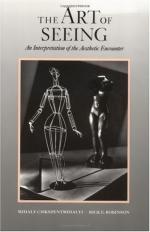|
This section contains 2,844 words (approx. 10 pages at 300 words per page) |

|
It is generally, although not universally, agreed among philosophers that there is an important distinction to be drawn between the aesthetic qualities of objects, especially art objects, and their nonaesthetic qualities: between being serene, stunning, or grating, and being square, in the key of A-minor, or weighing seven pounds. The concept of an aesthetic quality is a philosophical one, not in general use, but aestheticians appeal to it in clarifying the practice of art criticism, justifying aesthetic judgments, and evaluating artworks.
Historical Background
Both David Hume (1963) and Immanuel Kant (1966) set the stage for this modern distinction in their discussions of aesthetic judgments, judgments regarding the beauty of objects. Both argued that such judgments differ in kind from judgments regarding ordinary perceptual properties. Both held that aesthetic judgments depend on subjective feelings of pleasure and affective responses, but both also sought a universal ground for such judgments...
|
This section contains 2,844 words (approx. 10 pages at 300 words per page) |

|


